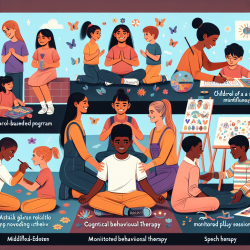Introduction
The COVID-19 pandemic brought unprecedented changes to the education system, affecting students' mental health across the globe. A recent study titled "School learning modes during the COVID-19 response and pre- to during pandemic mental health changes in a prospective cohort of Canadian adolescents" provides valuable insights into how different learning modes impacted adolescent mental health during the pandemic. This blog explores these findings and offers guidance for practitioners seeking to enhance their skills and support students effectively.
Understanding the Research
The study evaluated mental health changes among Canadian adolescents across various learning modes—virtual optional, virtual mandated, in-person, and blended. It used data from 7,270 students in 41 secondary schools, employing conditional change linear mixed effects models to assess learning modes as predictors of mental health changes. The study also examined the moderating effects of gender and home life happiness.
Key Findings
- Students in blended learning modes experienced greater increases in anxiety compared to their peers in other modes.
- Females learning fully in-person and males learning virtually when optional showed less increase in depression scores than their counterparts in other learning modes.
- Virtual learning when optional was linked to greater declines in psychosocial well-being among students without happy home lives.
Implications for Practitioners
These findings underscore the importance of considering individual student needs when implementing learning modes. Practitioners can enhance their skills by:
- Recognizing the diverse impacts of learning modes on different genders and home environments.
- Providing targeted support to students in blended learning environments to manage anxiety.
- Encouraging open communication with students and parents to understand their preferences and challenges.
Encouraging Further Research
While this study provides valuable insights, further research is needed to explore the long-term effects of learning modes on mental health. Practitioners are encouraged to engage in research initiatives and collaborate with academic institutions to deepen understanding and improve educational practices.
Conclusion
The study highlights the complex interplay between learning modes and mental health during the pandemic. By considering these findings, practitioners can better support students and create more resilient educational environments. To read the original research paper, please follow this link: School learning modes during the COVID-19 response and pre- to during pandemic mental health changes in a prospective cohort of Canadian adolescents.










